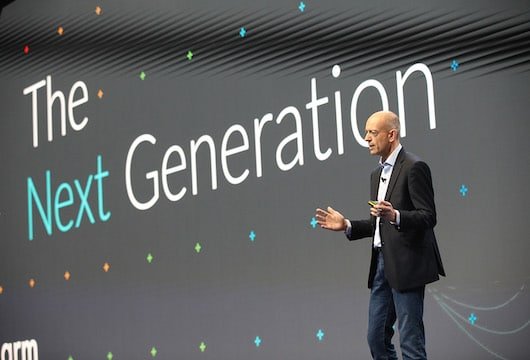
The MWC keynotes ended with a unicorn hunt but ARM’s kids panel showed the true way forward for the industry.
The final keynote session of MWC Thursday attempted to introduce what the GSMA expects will be the next so-called “unicorns” from its 4YFN side event for start-ups. But they were arguably looking in the wrong place, as the most interesting new entrepreneurs were onstage the previous day – and none of them over the age of 14.
The unicorn keynote session featured CEOs from four startups proposing a range of technological solutions:
- Light, which developed the imaging technology for the new Nokia 9 PureView smartphone that uses five cameras to produce high-rez photos. CEO and co-founder Dave Grannan said the technology could also be used to enable new e-commerce features (i.e. Alexa using its camera to measure your kitchen shelves to recommend the right sized microwave oven) and telemedicine i.e. remote wound management).
- MessageBird, which uses APIs to simplify omnichannel customer service for enterprises. Founder and CEO Robert Vis didn’t say exactly how it worked, but cited examples like enabling anonymized communication with your Uber driver, reordering food right away when the delivery goes bad, or clinics reminding patients of appointments via whatever messaging service they use.
- Sparrho, which aims to counter distrust of AI with ‘augmented intelligence’ (a.k.a. hybrid AI). Founder and CEO Vivian Chan explained the objective is to enable collaboration between humans and machines to demystify the decisions that an AI algorithm makes and help it make better decisions.
- Picasso Labs, which has developed an analytics platform that provides performance insights for all of the visual content that brands put online (to include Instagram and other social media sites). Founder and CEO Anastasia Leng said this allows brand marketers to understand the actual impact of every single visual cue they put in front of their consumers and how that impacts consumer reactions.
All of these are pretty innovative, of course. But the whole session paled in comparison to a Wednesday keynote from ARM CEO Simon Segars, who said that the secret to figuring out the fabled “killer apps” for 5G is to ask the kids who will be growing up with the technology.
And that’s just what he did – literally. Segars brought out onstage four kids who are members of Generation Arm2Z, a project started by ARM last year “to get kids and young people engaged in the discussion about where technology is going next.”
But the four Generation Arm2Z ‘ambassadors’ weren’t your average kids:
- Emma Yang (age 14) developed an app called Timeless, which enables people with Alzheimer’s to stay connected with their families.
- Avye Couloute (age 11) builds robots for fun and started an event called Girls Into Coding. As the name suggests, it provides girls with the tools and knowledge to learn coding, with the goal of creating opportunities for girls in STEM.
- Reuben Paul (age 13) hacks household appliances to demonstrate security flaws, and founded CyberShaolin, a non-profit security awareness and education organization for kids.
- Samaira Mehta (age 10) created a “STEM coding board game” called CoderBunnyz as a way to get kids started in understanding the concepts of coding, as well as an AI board game called CoderMindz, and started the 1 Billion Kids Can Code initiative.
The kids are alright (and also right)
The Arm2Z panel was more than a cute novelty – the important overall theme was how kids view the digital mobile world that we all live in. Put simply, they aren’t encumbered by legacy mindsets shaped at a time when everyone thought the iPod was a pretty neat idea – the digital mobile paradigm is completely normal for them.
Consequently, they’re keenly aware of the importance of STEM, knowing how to code in a software-driven world, keeping these networks, services and gadgets secure by design, and the ability of all this tech to create a more inclusive society where no one is left behind.
Encouragingly for the mobile sector, all four Arm2Z kids are very keen on 5G, particularly its low-latency capabilities and the kinds of apps that will enable, and the ability of 5G to bring those capabilities to underserved populations.
Indeed, a point each Arm2Z panelist raised repeatedly to the audience was the need for the mobile industry to make digital technology more accessible and bring the “intelligent connectivity” of MWC’s tag line to places where there isn’t yet any connectivity at all, or where people can’t afford it.
That might sound pie-in-the-sky, and there may not be an obvious monetizable business model, which was the chief concern of the unicorns (with the exception of Sparrho, whose technology is driven by the need to overcome human suspicion and distrust of AI).
But that’s to miss the point that these young people will grow up to be future customers and even business partners who might come up with your killer 5G app. They don’t just see digital mobile technology as a vehicle for social media, cooler games and video-streaming services – they see it as a platform to make the world a better place for everyone, not just those who can pay for it.
That is what they expect mobile and digital companies to be doing. And if you don’t, they’ll do it themselves – with or without you.

Be the first to comment